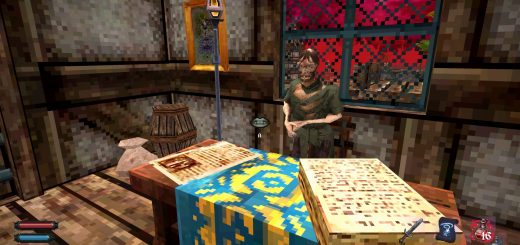Assassin's Creed Valhalla has a surprisingly thoughtful Lord of the Rings Easter egg
You’ve probably seen some of the early-game Easter eggs in Assassin’s Creed Valhalla by now: most notably the Harry Potter house in Lunden, and the tribute to Keith Flint and The Prodigy in Essex. But later in the game you may well stumble across a Lord of the Rings reference – and it’s an Easter egg with a surprising amount of depth.
On the west side of the in-game version of Gloucester (or “Glowecestre”), you’ll stumble upon a community of pagans living in moss-covered homes, and in one of these is a note of some significance. “One of the little folk asked me to make the door smaller, as he wants to keep unruly houseguests from his house,” the note reads. “After the nonsense with the druid last fall, I can see his point.”
Given the placement of the note in an area that looks like Hobbiton, I think it’s safe to assume the druid mentioned in the letter is supposed to be Gandalf, the “little folk” hobbits, and the one complaining is Bilbo Baggins. Oh, and there’s also a ring placed on top of the envelope – just in case you hadn’t already cottoned on at that point. You can’t pick the ring up, but frankly there’s enough going on in Valhalla without the need for an epic quest to destroy the one ring.
The Easter egg itself was a lovely little surprise to find, but having grown up in Gloucestershire I’d previously heard talk that J.R.R. Tolkien had likely influence from his visits to the county – so I decided to investigate a little further. It turns out the location of that Easter egg may not be entirely coincidental, as Tolkien’s work was probably inspired by his visit to Lydney Park in 1929.
1 of 3 Caption Attribution This all took me on quite an unexpected journey.
Tolkien served as a professor of Anglo-Saxon at Oxford’s Pembroke College between 1925 to 1945, and during this time was invited to work on an archaeological dig in Lydney, Gloucestershire. As part of this, Tolkien examined a Romano-Celtic temple that was later given the name Dwarf’s Hill by the Anglo-Saxons. According to local tradition, those who lived in the area quickly forgot about the Roman origins of the ruins, and began to claim goblins and dwarves lived in the hill.


